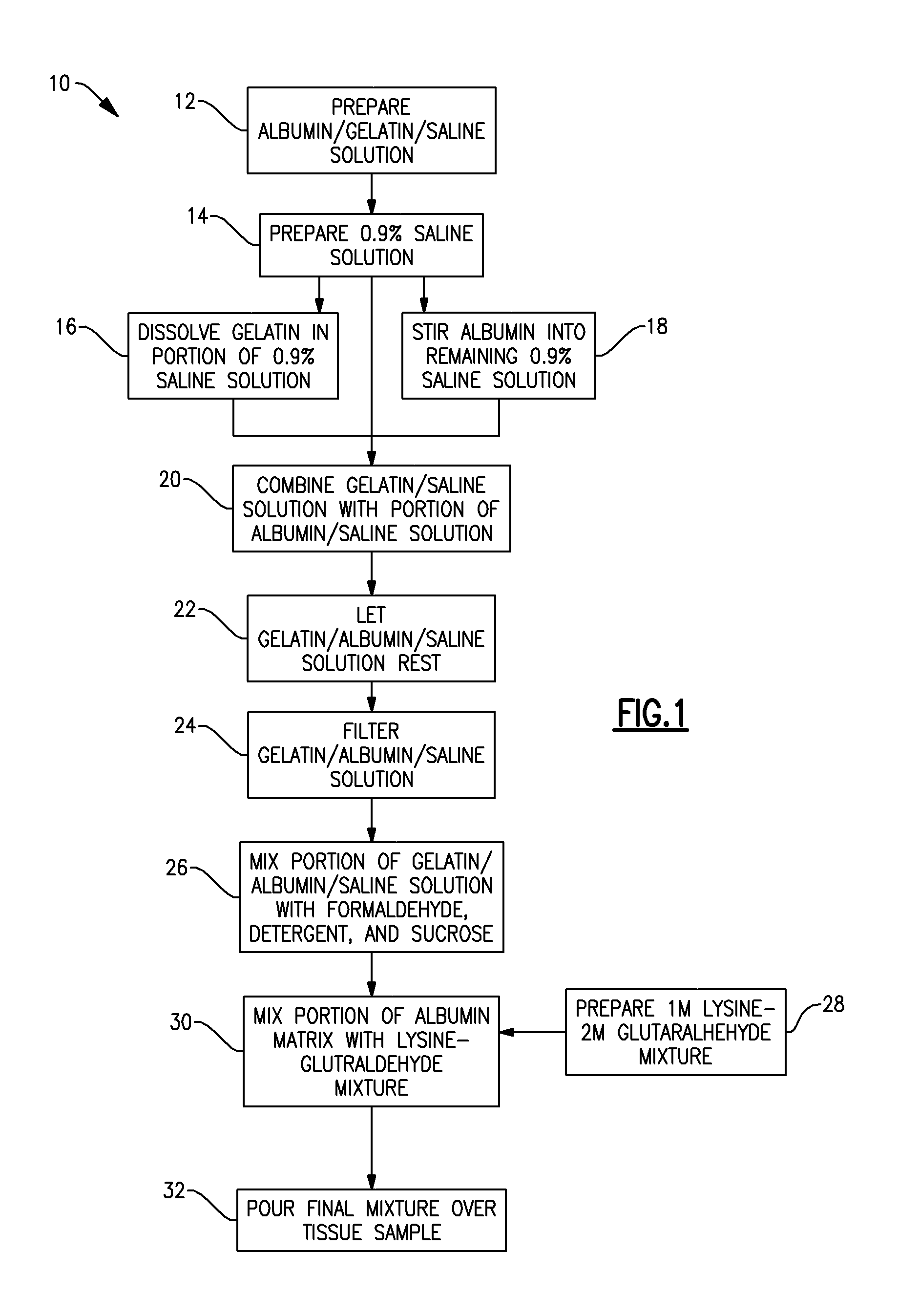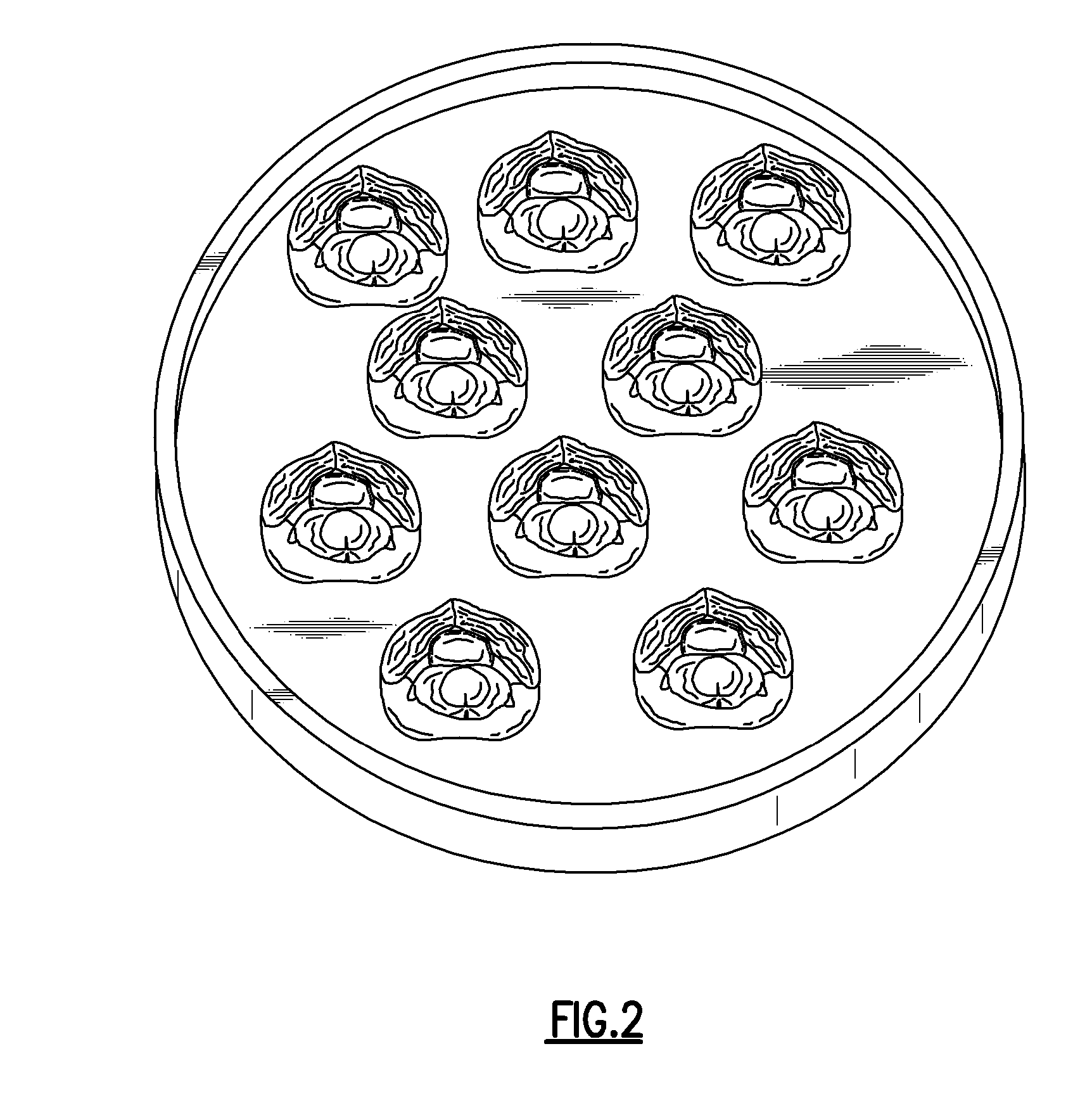Tissue Embedding Matrix
a tissue and matrix technology, applied in the field of tissue sample processing, can solve the problems of not widely available to researchers for tissue samples that firmly retain tissue samples after they are sectioned, harm to the and water-soluble matrixes that do not firmly adhere to tissue samples, etc., to achieve the effect of minimally altering the histological staining properties of tissue samples, simple preparation and convenient us
- Summary
- Abstract
- Description
- Claims
- Application Information
AI Technical Summary
Benefits of technology
Problems solved by technology
Method used
Image
Examples
Embodiment Construction
[0020] Referring now to the drawings, wherein like reference numerals refer to like parts throughout, there is seen in FIG. 1 a method 10 for preparing a tissue embedding matrix according to the present invention. More particularly, formation of the matrix of the present invention begins with the preparation of an albumin / gelatin / saline solution 12 containing approximately 30% egg albumin, 0.5% gelatin, and 0.9% saline.
[0021] The albumin / gelatin / saline solution is formed by preparing 750 milliliters of a 0.9 percent saline solution 14. Next, 250 milliliters of the saline solution is heated to between 60-70 degrees Celsius, so that 3.75 grams of gelatin are then dissolved into the 250 milliliters of saline solution 16. Then 225 grams of albumin is slowly stirred into the remaining 500 milliliters of the 0.9% saline solution 18. The 250 ml gelatin / saline solution and the 500 ml albumin / saline solution are mixed together 20, allowed to rest for 4 hours 22, and then filtered 24.
[0022]...
PUM
 Login to View More
Login to View More Abstract
Description
Claims
Application Information
 Login to View More
Login to View More - R&D
- Intellectual Property
- Life Sciences
- Materials
- Tech Scout
- Unparalleled Data Quality
- Higher Quality Content
- 60% Fewer Hallucinations
Browse by: Latest US Patents, China's latest patents, Technical Efficacy Thesaurus, Application Domain, Technology Topic, Popular Technical Reports.
© 2025 PatSnap. All rights reserved.Legal|Privacy policy|Modern Slavery Act Transparency Statement|Sitemap|About US| Contact US: help@patsnap.com



